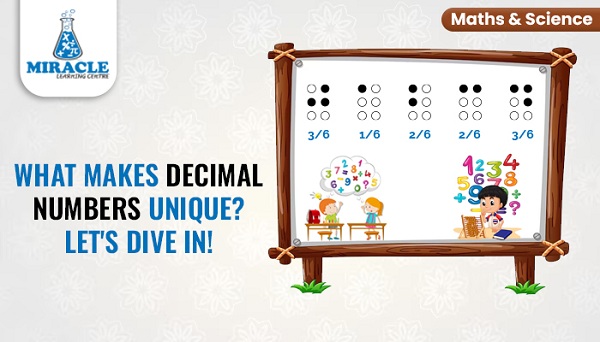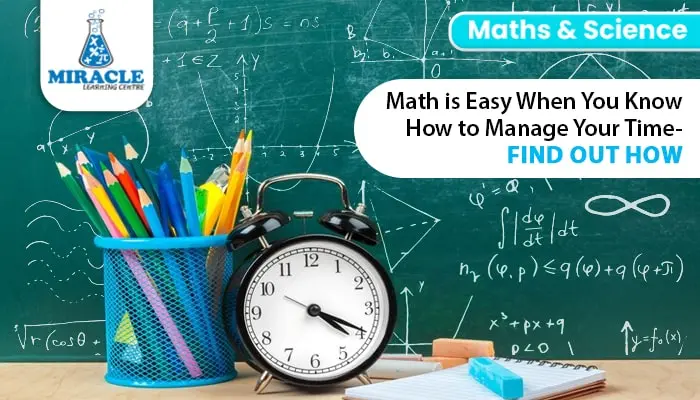We use decimal numbers frequently in our daily lives. Decimals are essential for representing and modifying real-world values, and are used in everything from calculating grocery bills to making intricate financial decisions. The Miracle Learning Centre is a guiding light of wisdom and information in Singapore’s dynamic educational environment, where brilliance in mathematics is highly regarded. We are dedicated to improving mathematical abilities and promoting a thorough understanding of this important topic, as demonstrated by our Maths Tuition Centre in Singapore. Come along as we explore the world of decimal numbers and learn how crucial they are to achieving proficiency in mathematics.
What Are Decimal Numbers?
Decimal numbers, often simply referred to as decimals, are a fundamental concept in mathematics. They are a way of representing numbers that are not whole, but rather fractions or parts of a whole. Decimal numbers use a decimal point to separate the whole part from the fractional part, allowing us to express quantities more precisely.
The decimal point is a critical component of decimal numbers, as it indicates the position of the fractional part relative to the whole number. The digits to the left of the decimal point represent the whole part, while the digits to the right represent the fractional part. Each digit’s position to the right of the decimal point represents a power of ten, with the first digit being tenths, the second digit hundredths, the third digit thousandths, and so on.
For example, in the decimal number 3.14, “3” is the whole part, and “14” is the fractional part. The “1” is in the tenths place, and the “4” is in the hundredths place.
Decimal Notation
Decimal numbers are typically expressed using the decimal notation system, which consists of the digits 0 through 9. Each digit represents a specific quantity, with the leftmost digit having the highest value and the rightmost digit having the lowest value.
To better understand decimal notation, let’s examine the number 456.78:
- The digit “4” is in the hundreds place, representing 4 hundreds (4 x 100).
- The digit “5” is in the tens place, representing 5 tens (5 x 10).
- The digit “6” is in the ones place, representing 6 ones (6 x 1).
- The decimal point separates the whole part from the fractional part.
- The digit “7” is in the tenths place, representing 7 tenths (7 x 0.1).
- The digit “8” is in the hundredths place, representing 8 hundredths (8 x 0.01).
Decimal numbers allow us to express quantities with great precision, making them an indispensable tool in various fields, including science, engineering, and finance.
Converting Fractions to Decimals
Decimals provide a convenient way to represent fractions. To convert a fraction to a decimal, divide the numerator (the top part of the fraction) by the denominator (the bottom part of the fraction).
For example, to convert 3/4 to a decimal, you would perform the division 3 ÷ 4 = 0.75.
Operations with Decimal Numbers
Decimal numbers can be manipulated using the same arithmetic operations as whole numbers: addition, subtraction, multiplication, and division. When performing these operations, it is essential to align the decimal points correctly.
Addition and Subtraction:
When adding or subtracting decimals, line up the decimal points and then perform the operation as you would with whole numbers. If the numbers have different numbers of decimal places, you may need to add trailing zeros to make them match.
Example for Addition:
2.54 + 1.7 = 4.24
Example for Subtraction:
5.432 – 2.198 = 3.234
Multiplication:
Multiply decimals as if they were whole numbers. Then, count the total number of decimal places in both factors and place the decimal point in the result so that it has the same total number of decimal places.
Example for Multiplication:
2.5 × 0.6 = 1.5
Division:
Divide decimals similarly to long division. Move the decimal point in the dividend (the number being divided) to make it a whole number and move the decimal point in the divisor (the number you are dividing by) the same number of places to the right. Then, perform the division.
Example for Division:
4.8 ÷ 0.2 = 24
At Miracle Learning Centre, our Maths Tuition program covers these essential skills and more, helping students develop a strong foundation in mathematics. Our experienced instructors guide students through the intricacies of decimal operations, ensuring they grasp these concepts with confidence and precision.
Practical Applications of Decimal Numbers
Decimal numbers are not just theoretical; they are used extensively in various aspects of daily life and professional fields:
Finance: Decimal numbers are crucial for financial calculations, such as interest rates, currency exchange rates, and stock market prices.
Measurement: Decimal numbers are used in measurements for precision, such as in scientific experiments, construction, and engineering.
Cooking: Recipes often require precise measurements, involving fractions or decimal quantities, to achieve the desired taste and texture.
Medicine: Medical dosages and measurements, especially for medications and lab results, are often expressed in decimal form to ensure accuracy.
Statistics: In data analysis and statistics, decimal numbers are used to represent percentages, probabilities, and other numerical data.
Computer Science: Decimal numbers are used in computer programming, especially in scientific and engineering applications, where precision is essential.
Conclusion
Decimal numbers, born from the brilliant Hindu-Arabic numeral system, have woven themselves into the fabric of our everyday lives. Their versatility and simplicity make them indispensable in a wide range of applications, from finance to science and beyond. Understanding how to work with decimal numbers is not just a mathematical skill; it’s a practical tool that empowers us to navigate the intricacies of our modern world with confidence and precision.
Whether you’re a student pursuing excellence in math or a concerned parent seeking the best education for your child, understanding decimal numbers is a crucial step. At Miracle Learning Centre, our Maths tuition programmes aim to provide students with a solid foundation in decimals and empower them to apply this knowledge confidently. As you encounter decimal numbers in the world around you, remember that they are more than mathematical symbols—they are tools that unlock opportunities for precision and success. Enroll in our maths tuition centre today to embark on a journey of mathematical mastery.


